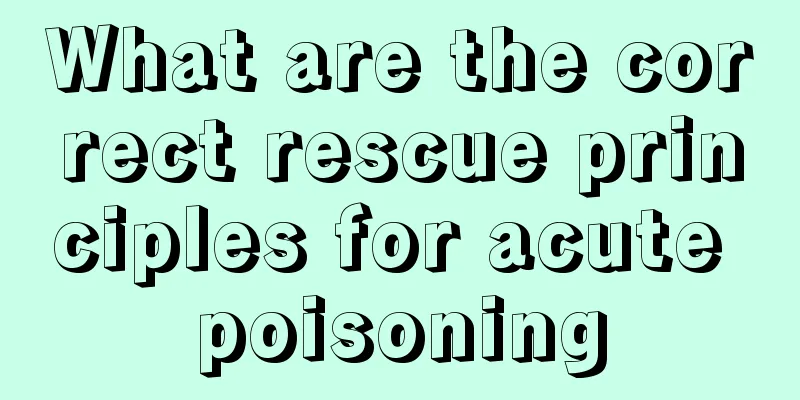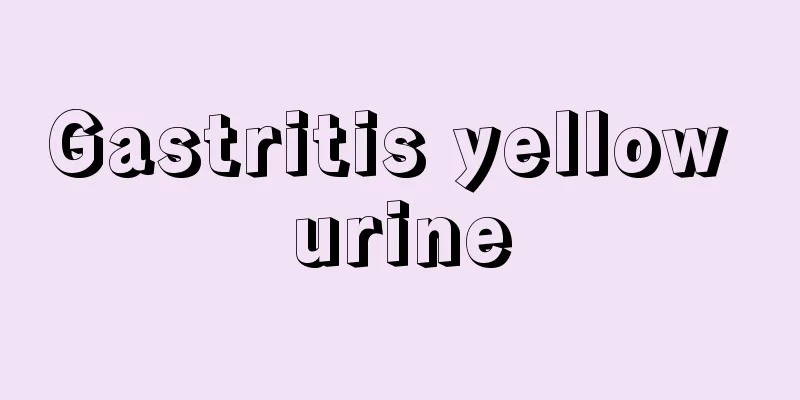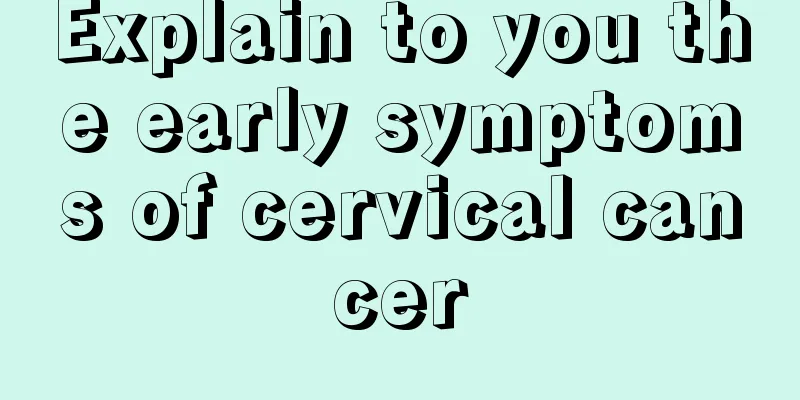What are the correct rescue principles for acute poisoning

|
Poisoning is not easy to happen under normal circumstances. The word poisoning is unfamiliar to most people. However, acute poisoning may occur suddenly due to accidents or carelessness when eating some food. There are many types of people with acute poisoning. Some are due to accidental ingestion of pesticides, accidental ingestion of medicines or other reasons. Patients with acute poisoning must be rescued as soon as possible, and the toxins in the patient's stomach must be quickly discharged to save the patient's life. 1. First aid principles for acute poisoning Taking large amounts of chemicals, pesticides, etc. can cause poisoning and even death. It is often taken accidentally, but some people take it to commit suicide. Regardless of the cause of poisoning, first aid should be provided immediately. If you find someone has taken poison, do the following immediately. Ask the patient: Immediately ask the patient what medication he or she is taking and how much. Look for clues immediately when the patient is unclear or refuses to answer. Check for clues: Quickly check around the patient, such as on the bed, floor, table, etc. to see if there are any medicine bottles or bags left behind, and how many are missing. If the patient shows signs of poisoning, first aid should be given without hesitation. Acute poisoning patients are in a critical condition and have serious damage, requiring emergency treatment. Therefore, the first aid principles for acute poisoning should emphasize the following four words, namely "fast", "stable", "accurate" and "dynamic". "Fast" means quick, every second counts; "stable" means calm, composed, bold and decisive; "accurate" means accurate judgment, not using wrong methods for first aid; "dynamic" refers to dynamic symptoms and whether the measures are appropriate. Second, the first aid techniques for acute poisoning First aid can be divided into three steps: detoxification, detoxification and symptomatic treatment. 1. Detoxification methods 1. Remove skin poisons: Quickly remove the poisoned person from the poisoning site, take off contaminated clothing, and repeatedly rinse the body with lukewarm water to remove contaminated toxic substances. If it is alkaline poisoning, you can use acetic acid or 1%~2% dilute hydrochloric acid, or acidic fruit sweat to rinse; if it is acidic poisoning, you can use lime water, baking soda water, or soapy water to rinse. In case of trichlorfon poisoning, do not use alkaline solutions for flushing. 2. Remove poison from eyes: Rinse quickly with 0.9% saline or clean water for 5 to 10 minutes. Acidic poisoning should be flushed with 2% carbonic acid solution, and alkaline poisoning should be flushed with 3% boric acid solution. Then you can apply 0.25% chloramphenicol eye drops or 0.5% chloramphenicol eye ointment to prevent infection. When there is no medicine, just rinse with lukewarm water. 3. First aid for inhalation of poison: The patient should be immediately removed from the poisoning site and moved to a place with fresh air, where he can breathe oxygen. 4. First aid for ingestion of poison: induce vomiting. Use fingers, feathers, chopsticks, or tongue depressors to touch the throat to induce vomiting of the poison. Do not use if you are not sober. If conditions permit, you can also take 50-100 ml of 1% zinc sulfate solution. If necessary, 5 mg of dehydrated morphine (apomorphine) should be injected subcutaneously. ( 1) Contraindications for inducing vomiting: ① Those who have been poisoned by strong acids or alkalis. ② Those who have already experienced coma, convulsion or seizure. ③People with severe heart, esophageal varicose veins and ulcers. ④Pregnant women should use with caution. (2) Gastric lavage: For conscious patients, the sooner the better. However, it should not be used for patients who are unconscious, in convulsions, shock, or coma. Gastric lavage was performed only under the guidance of the husband. (3) Enema: cleans out toxins in the intestines and prevents absorption. In case of poisoning by corrosive poisons, you can feed eggs, thick rice soup, starch paste, milk, etc., which can protect the gastrointestinal mucosa and delay the absorption of poisons; oral administration of charcoal powder and white clay has the function of adsorbing poisons; if the poisoning is caused by subcutaneous or intramuscular injection, and the time is not long, you can inject 0.5 mg of 1% epinephrine into the muscles around the original needle site to delay absorption. (4) Eliminate toxins : The following methods can be used to promote the elimination of toxins that have entered the body. ① Diuretic and detoxifying: Drinking plenty of water and tea has a diuretic and detoxifying effect; you can also take furosemide 20-40 mg/day orally. ② Intravenous detoxification: use 40-60ml of 5% glucose and 500mg of vitamin C for intravenous drip. ③ Blood exchange for detoxification: It is often used in cases of poisoning by extremely toxic cyanide and arsenide. The patient's blood can be replaced with blood from a healthy person of the same type. ④ Dialysis detoxification: Hemoperitoneal and colon dialysis can be performed in the hospital to remove toxins. |
<<: How to treat arterial thrombosis?
>>: What are the symptoms of acute viral dermatitis
Recommend
I suddenly get acne on my face. What should I do if acne occurs during the change of seasons?
If you suddenly get acne on your face, you need t...
Is breast ductal adenocarcinoma breast cancer?
Breast ductal adenocarcinoma is not breast cancer...
Can egg tarts be eaten overnight?
We often see a lot of egg tarts when we go to bak...
Early diagnosis of nasopharyngeal carcinoma is very important
The lesions of nasopharyngeal carcinoma are deep ...
What can be used to wash off dried blood stains
In daily life, the clothes we wear or the sheets ...
What should I do if my tongue coating turns yellow and my mouth becomes dry
Yellow tongue coating and dry mouth are not uncom...
What are the symptoms of habitual dislocation of the shoulder joint?
If our shoulder joint has been dislocated before,...
Which department should I go to for glioma
Which department should patients with glioma go t...
Experts talk about the clinical manifestations of pancreatic cancer.
Pancreatic cancer has a great impact and harm on ...
Why does masturbating too much lead to kidney deficiency
Many young male friends, because they are in adol...
How to make your butt smaller?
The size of the buttocks affects a person's a...
What to do if your face gets burned
If your skin is burned, you must pay attention. T...
Medicinal effects and functions of peony flowers
Everyone loves peonies because when they bloom, t...
How to preserve propolis?
Everyone knows that propolis is similar to honey....
Can lung CT detect lung cancer?
At this time, when the physical examination finds...









